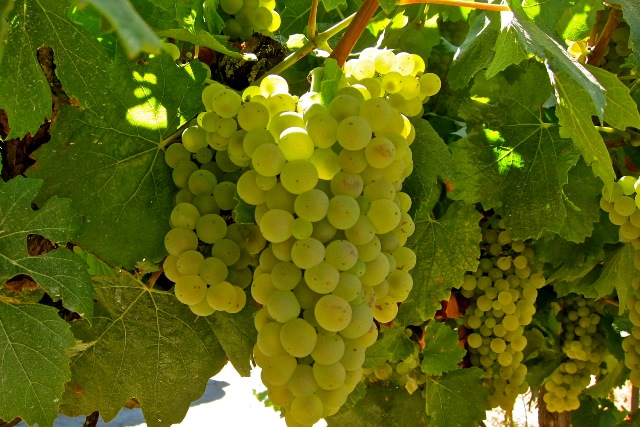The first thing that comes to mind at the mention of the word Chardonnay is refined French white wine. It is created from the grape variety of the same name, to which the drink owes its delicate taste and international recognition.
Table of contents
Description of Chardonnay grapes
The history of breeding is rooted in the distant past. There are many versions that describe the occurrence of Chardonnay. According to one of them, the grape owes its existence to the Crusades, which brought seedlings from the East. Other winemakers consider it a merit of the monks of France. According to another opinion, his homeland must be called ancient Lebanon. Despite the large number of disputes on this issue, one thing is certain: Chardonnay is an independent variety, not a derivative of any other grape. This was proven by researcher Pierre de Halle.

Speaking about the description, Chardonnay refers to the early, self-pollinated species. He does not differ in high productivity. The maximum weight of one bunch is 200 grams. Sugar content increases significantly in the drying stage and reaches a value of 35%. A distinctive feature of other grape varieties is the unpretentiousness of climate and soil, but, like any other species, it is quite sun-dying.
Characteristics of berries
The greenish white fruits of Chardonnay have great juiciness.Their fullness directly depends on external influence, growing conditions. Each berry has a rounded shape, the skin is dense and bright, with pronounced pigmentation. The same rounded form in dark green, almost gray foliage.
Advantages and disadvantages
Those who grow this grape unanimously admit that it has a number of undeniable advantages. These include:
- Frost resistance;
- Good for wine making;
- Can be used to make champagne;
- A large amount of juice;
- Resistance to various diseases;
- Low soil requirements;
- Rapid ripening (130 days);
- Resistance to drought;
- With proper care of the vine, products of exceptionally high quality are obtained.
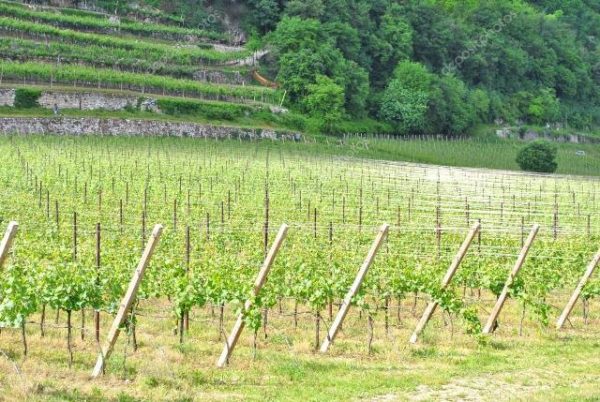
The disadvantages include:
- The need for sheltering for the winter;
- Grapes do not like excessive moisture;
- Loss of taste when over-eating;
- Low yield.
Also to the difficulties in the care can be attributed to the early ripening of berries, which came in the cold spring. There are difficulties in countries with hot climates: the grapes ripen very quickly, and also soon begins to fade.
Using a grade for making wine
Like other white wines, Chardonnay is not stored for long, and it does not need long-term aging. Immediately after the end of the fermentation process - the wine becomes suitable for consumption.
Tastes vary greatly under the influence of various factors.Therefore, when preparing a drink, it is important to comply with the technology. It matters whether the wine was aged in a barrel, at what temperature. The storage vessel itself also plays an important role. For example, oak wood gives a liquid buttery taste.
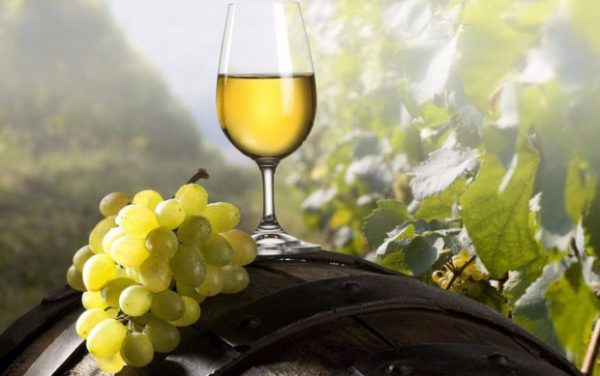
The region of growth of a varietal variety also affects the taste. This Burgundian product is distinguished by its mineral freshness. It can also catch the apple and citrus notes.
Landing
Each climatic zone has its own growing conditions. In hot terrain, the distance between bushes during planting should be greater than in cold ones. In order to protect the plant from waterlogging, it should be planted in well-ventilated areas.
Planting planting occurs in spring or autumn. The second option is more common among gardeners, as saplings more easily transfer place changes during this period. If spring planting is planned, the preparation begins in the previous season before the snow falls. It is necessary to dig a hole with a depth of no more than 80 centimeters, and lay out its bottom with a drainage layer. The soil must be fertilized with humus - this will contribute to the development of a powerful plant root system in the first year of its life.
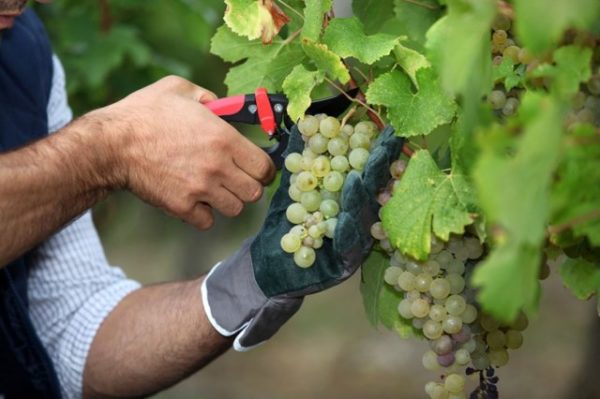
Care for a young and mature vine
As experienced gardeners note, the fastest grape growth is observed in the first two months. The variety is considered to be medium tall, but it can also be vigorous and needs support.
Watering is recommended using a sprayer, increasing its abundance at high temperatures. To eliminate excess moisture is mulching.
In the spring, a special approach is sometimes applied to this species. Some shoots are trimmed to slow ripening berries for two weeks. This action is necessary if the kidneys begin to swell too early, when the threat of frost is still present.
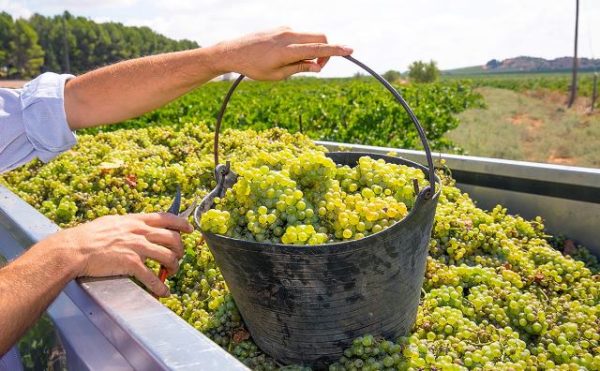
Breeding methods
The most common method of propagation of grapes: using cuttings. The procedure is carried out in the fall and combined with trimming a bush. Determining a quality branch suitable for rooting is quite simple. Its diameter must be at least 6 millimeters and not more than 10.
We need a hard stalk with clean brown bark and bright greens on the cut. Measure 30-40 centimeters long, the trunk is cleared of stepsons and laid down for the winter. Until spring, they are stored in a wet and dark place, for example, in a cellar. After the appearance of the roots, the seedlings are planted in separate containers.
Diseases and pests
Grape plantings of the Chardonnay variety resist pests and diseases well, but preventive measures are still worth taking. The plant should be protected from moisture, because at high humidity increases the risk of rotting fruit.You also need time to remove weeds and dried leaves, giving the air around the possibility of free circulation. If necessary, the greens of the grapes are sprayed with chemicals twice per season.
Chardonnay - a variety that deserves attention for taste and unpretentiousness.
